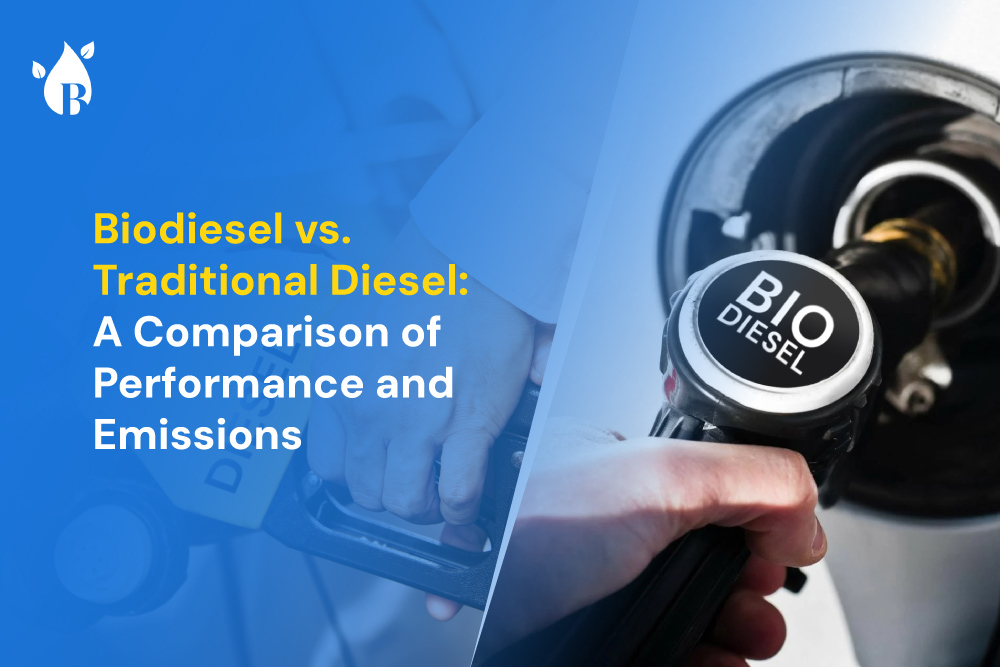
Biodiesel and Petroleum Diesel Current Scenario
Does Biodiesel Produce Less Emissions than Diesel?
1. Air quality: Biodiesel reduces agricultural pollutants by 1.0% (nitrogen), 8.3% (phosphorus), and 13% (pesticides) per net energy gain. It cuts GHG emissions by 56-96% (equivalent to planting 1.9 billion trees) and lowers global warming pollution by 80-90% compared to petroleum diesel.
“Based on a report by Chemanalyst, India’s biodiesel market witnessed a demand of 0.17 million tonnes in FY2021, and it is projected to reach 0.26 million tonnes by FY2030.”
Is Biodiesel More Efficient than Regular Diesel?
2. Cetane Number: Biodiesel typically has a higher cetane number than regular diesel. The cetane number represents the fuel’s ignition quality, with higher values indicating better combustion efficiency. Biodiesel’s higher cetane number can enhance combustion efficiency, leading to improved overall engine efficiency.
3. Lubricity: Biodiesel has better lubricity properties than regular diesel. The increased lubricity can help reduce friction between engine components, potentially improving mechanical efficiency and reducing energy losses due to friction.
4. Viscosity: Biodiesel has a higher viscosity compared to regular diesel. Higher viscosity can affect fuel atomization and combustion efficiency, potentially resulting in slightly reduced engine power and torque. However, modern engine technologies and fuel system adaptations can help mitigate this effect.
5. Oxygen Content: Biodiesel contains oxygen molecules, which promotes more complete combustion. This can lead to reduced unburned fuel and particulate matter emissions, contributing to cleaner combustion and potentially improved engine efficiency.
Also Read: Is biodiesel illegal in India?
Conclusive Thoughts
We at Buyofuel offer the best Biodiesel Fuel Prices. Our extensive database consists of top Biodiesel Manufacturers in India. If you’re interested in learning more, simply drop us an inquiry and we’ll be happy to assist you.



